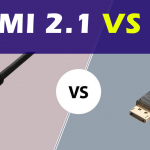Ever tried connecting a device to your home theater and found the HDMI cable doesn’t fit?
Surprised?
Pause and take a breath. Before buying a new cable, check your device’s HDMI port.
There are three HDMI cable types: HDMI, Mini HDMI, and Micro HDMI. By the end of this read, you’ll know exactly which one you need.
Let’s dive in!
Uncovering the Basics of HDMI
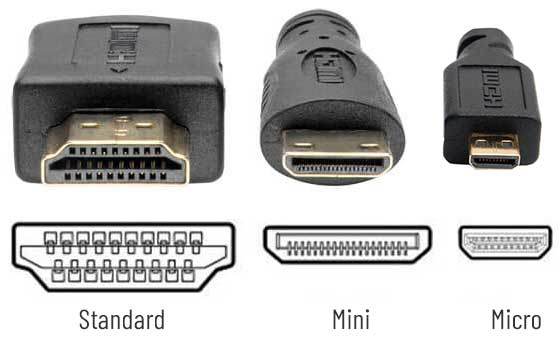
The legendary HDMI Cable marks a tale of innovation that made every heart skip a beat that witnessed the remarkable impact of this heavenly cable. It brought such a revolutionary change in the world of technology that can put Cinderellas Fairy Godmother to shame!
Yes, that’s right!
While we now take high-quality audio/video experiences for granted, before HDMI’s inception, the world of TV and cinema was quite different. Soon after, its ability to transmit crystal clear audio and video, which sounded and seemed surreal, the HDMI cable became the belle of the ball in the world of digital entertainment. It’s something of an unsung hero in the world of entertainment.
So, what is it?
Simply put, HDMI(High Definition Multimedia Interface) is a digital standard for transmitting high-quality audio and video signals from source to receiver without much disruption.
Given that one HDMI cable didn’t fit your device, it’s evident that multiple HDMI types, each with different sizes, cater to various devices.
Now, despite the type, the structure of the HDMI cable doesn’t change. Keep reading to learn the basic structure of HDMI cables.
Structure of the glorious HDMI cable!
Pick up any HDMI cable, and look at its end; you’ll see 19 Pins in two rows. Consider this the core of the cable; these pins are the building blocks to allow such surreal audio-video signal transmission.
Some pins carry audio and video signals; some are for the clock channel, which looks after the data synchronization. There is also a dedicated 5V power supply channel, one power on/off channel, and a pin, also known as a “Swing Pin,” with several applications.
One pin is allocated for CEC (Consumer Electronics Control), which is likely used for communication between devices; however, to use the CEC channel, you must have devices compatible with this feature.
So much going on in this tiny cable! Doesn’t it sound like a gift sent from God?
Diving Deeper into the HDMI Evolution
The HDMI cable, with its captivating tale of innovation, didn’t just magically appear in its current forms. The journey began with the standard HDMI, but as technology advanced and devices became more compact, there arose a need for smaller connectors. This led to the introduction of new standards in 2006 and 2009. Both HDMI versions 1.3 (released in 2006) and 1.4 (released in 2009) expanded the HDMI family, introducing the “Type C” HDMI mini-connector and the “Type D” HDMI micro-connector. This evolution was not just about size but also about meeting the diverse needs of various gadgets. And with these developments, the debate over which connector is the best fit for different devices took center stage.
A Closer Look at the Pin Configurations
Now, let’s unravel another layer of the HDMI mystery – the pin configurations. While all HDMI types have 19 pins, their configurations differ slightly, especially when we compare the Micro and Mini HDMI.
For the Micro HDMI:
- Data 0+, Data 1+, and Data 2+ connections are made using PINs 9, 6, and 3, respectively.
- The shield connections for Data 0, Data 1, and Data 2 are linked to PINs 10, 7, and 4.
- Pins 11, 8, and 5 are designed for specific functionalities, ensuring the smooth transmission of audio and video signals.
On the other hand, for the Mini HDMI:
- The connections for Data 0+, Data 1+, and Data 2+ are through PINs 8, 5, and 2.
- The shield for Data 0, Data 1, and Data 2 connects to PINs 7, 4, and 1.
It’s fascinating, isn’t it? Such intricate details in these tiny connectors! It’s like discovering the secret ingredients of a magical potion. And while these details might seem technical, they play a crucial role in ensuring that we get that perfect audio and video experience.
Now, let’s learn about the different types of HDMI cables.
The First piece of the puzzle: HDMI/ Type A Connector
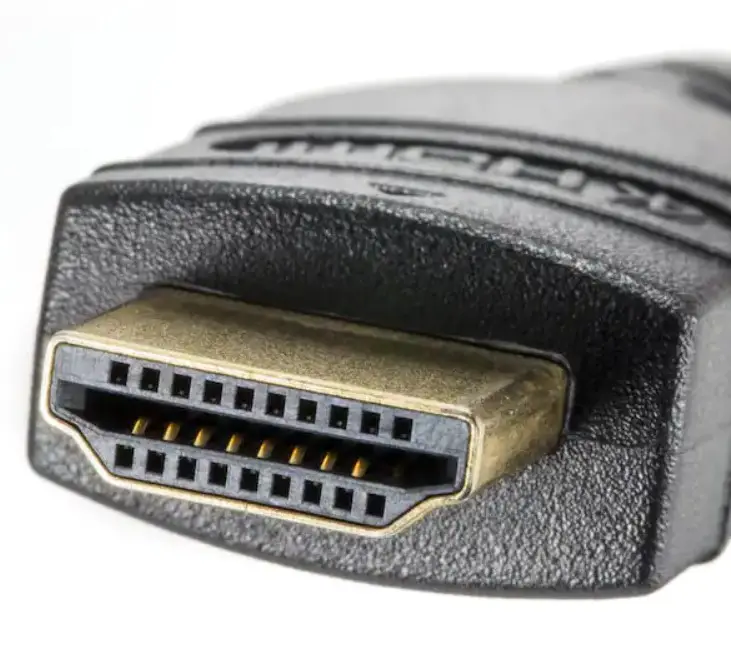
Let me guess, is this one you bought?
There’s a reason why you did so; it’s the most commonly used HDMI standards cable. One cable that you’ll see almost everywhere, even in your dreams, is HDMI Type A standard cable. It is used with DVDs, Blu-ray players, TVs, soundbars, and more. With the same 19 Pins structure connector, this HDMI cable has seen every length and breadth of the digital entertainment world.
The Type A HDMI cable’s main feature is its connector, a rectangle of 14×4.55mm, and clipped bottom corners. As it’s used in most devices, you can easily find the Type A HDMI cable. However, you must also check the specific cable type, not just the connector. An HDMI 2.0 cable suits regular 4K video signal transmission and supports HDMI ARC, whereas, for HDMI eARC, you might want to have an HDMI 2.1 cable, as it has a larger bandwidth.
Second One in the Lineage: Mini HDMI/ Type C Connector
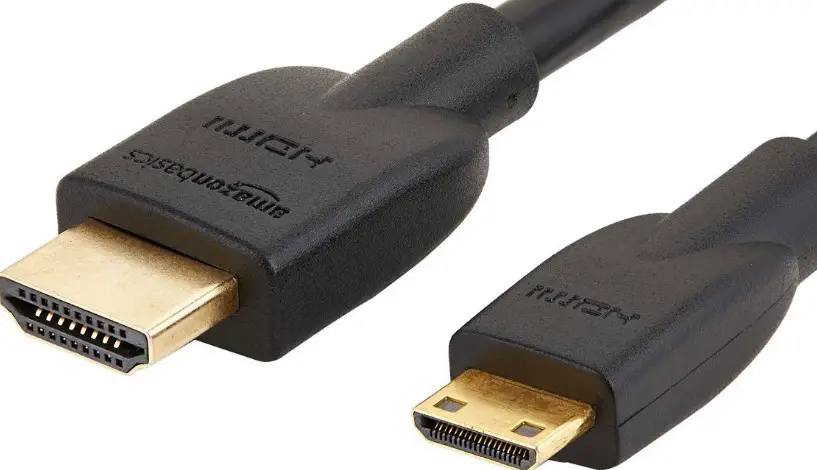
Mini HDMI; the name says it all!
With about 60% less area than the regular HDMI or Type-A cable, this connector connects smaller devices for audio-video transmission. It has the same 19-pin connector, with a smaller size to fit devices like DSLR cameras, Nintendo Switch, MacBook, and much more.
Note that the function of the connector isn’t affected by its size! The size of this connector type is 10.42 mm x 2.42 mm.
Final successor: Micro HDMI Type D
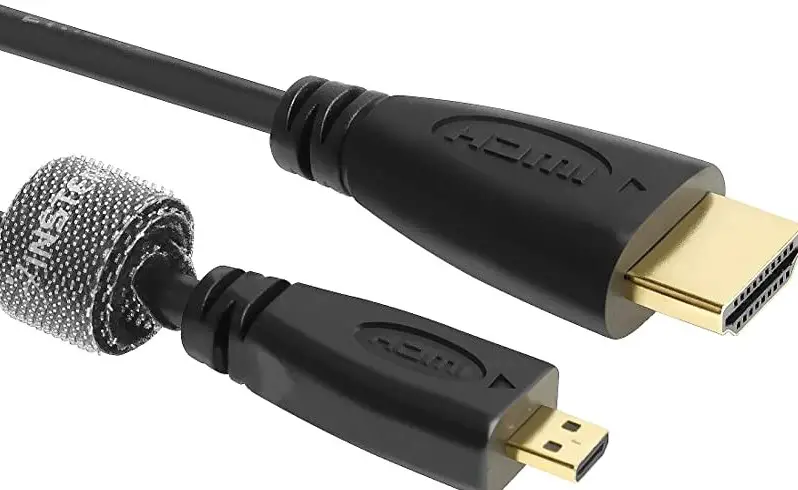
Yes, there is another one with a size even smaller than the former one!
The Micro HDMI/ Type D connector has the same 19-pin structure, with an area reduced by up to 72%. It carries high-quality audio/video signals from source to receiver through a connector of size 6.4 mm x 2.8 mm.
You might wonder, why was there a need for this innovation.
Here’s the answer:
This Type D connector or Micro HDMI is best for small gadgets like smartphones. However, over time, the manufacturing and use of Type D connectors have become obsolete and are being replaced with HDMI Type C connectors.
Difference between HDMI, Mini HDMI, and Micro HDMI
| HDMI | Mini HDMI | Micro HDMI |
|---|---|---|
| Connector size: 14 mm x 4.55 mm | Connector size: 10.42 mm x 2.42 mm | Connector size: 6.4 mm x 2.8 mm. |
| Used for digital devices such as Blu-ray, DVD players, TVs, Computers, and Video games | Used for: Cameras, tablets, and sometimes laptops | Used for small gadgets such as smartphones. |
Now You See!
If you’ve read this far, you should now know which HDMI cable or connector type is suitable for your device.
Don’t fret about the quality of the signals! The core construction of each type of HDMI cable is the same, allowing it to carry the same quality of audio-video signals. Before purchasing, just peek behind the device to ensure you choose the correct HDMI connector type, so you can fully enjoy digital entertainment.
FAQs on HDMI and Its Variants
Micro-HDMI and mini-HDMI are smaller versions of the standard HDMI connector. They are designed for use in small, portable devices. However, the standard HDMI is still widely used in larger devices like TVs, Blu-ray players, and game consoles.
Smaller connectors like micro and mini HDMI are more fragile and can wear out quicker. They also have limitations in cable length due to increased losses. Additionally, millions of devices still use standard HDMI connections.
Yes, HDMI type C is referred to as “mini-HDMI.”
USB Type-C is seen as a universal connector that can support various “alternate modes,” including HDMI and DisplayPort. While it might replace HDMI in some devices like laptops or phones, HDMI still has its established standards, especially for larger devices.
Smaller plugs like micro-HDMI are more fragile, get dirty easily, and wear out quickly. They might also be more expensive and harder to handle.
Ensure you are purchasing the correct type (standard, mini, or micro) based on your device’s port. Also, consider the quality, length, and compatibility with your device’s resolution and refresh rate.
Yes, adapters like micro-HDMI to HDMI or mini-HDMI to HDMI are available. However, ensure they are of good quality to avoid signal loss or damage.
While not as common as standard HDMI cables, they can be found in specialist shops or online stores. However, they might be more expensive.
No, the size differences are primarily for fitting various devices. The functionality remains the same.
Different sizes cater to different device requirements. For instance, smaller devices like smartphones or tablets might not have room for a full-size HDMI connection, hence the need for micro or mini versions.

I’m Shaun Conroy, an audiophile & founder of HiFi Audios. Holding a Bachelor’s in Sound Engineering, I bring deep expertise in audio devices and offer insights & recommendations to fellow enthusiasts.

